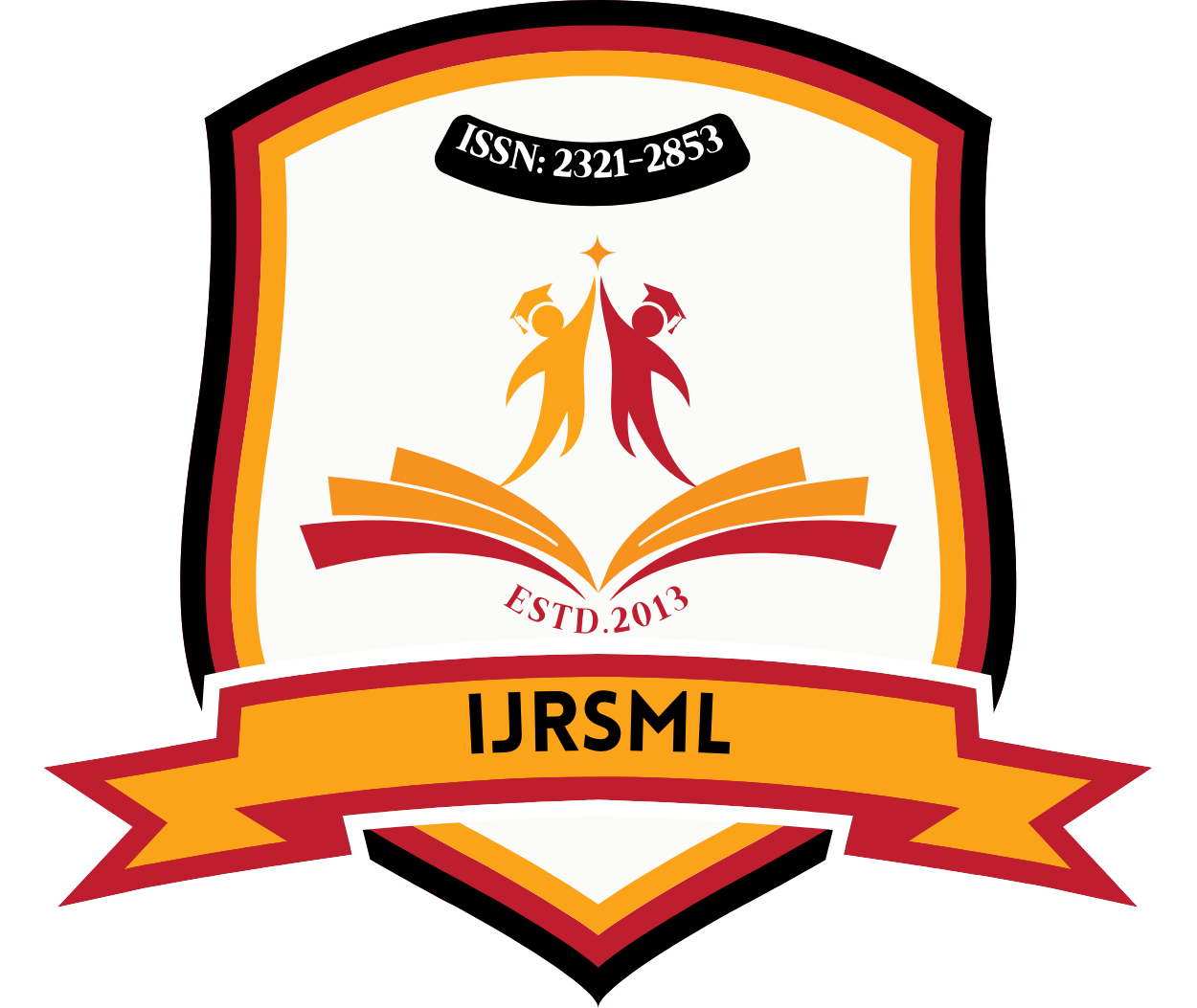![]()
Published Paper PDF: Download PDF
DOI: https://doi.org/10.63345/ijrsml.v13.i8.6
Dr. Tushar Mehrotra
DCSE, Galgotias University
Greater Noida, UP, India
tushar.mehrotra@galgotiasuniversity.edu.in
Abstract
This manuscript examines how the choice of language in AI voice assistants affects user trust among Indian consumers, offering both breadth and depth through a mixed‑methods design. In Phase 1, we conducted a large‑scale online survey (N = 500) stratified across six language conditions—English, Hindi, Tamil, Bengali, Marathi, and Telugu—to quantify trust dimensions (competence, reliability, benevolence) using a validated 5‑point Likert scale. Phase 2 comprised six focus groups (8 participants each), conducted in participants’ primary languages, to elicit nuanced perspectives on pronunciation fidelity, cultural resonance, and emotional rapport. Quantitative results demonstrate that regionally localized voice assistants yield significantly higher trust scores (M ≈ 4.10) than both English‑only (M ≈ 3.65) and Hindi‑only (M ≈ 3.78) interfaces (p < 0.001). Within regional languages, Tamil and Bengali achieved the highest mean trust (M = 4.21 and M = 4.15, respectively). Regression analyses controlling for age, education, and prior VA experience confirm language choice as a robust predictor of trust (β = 0.32–0.45, p < 0.001).
Qualitative themes reveal three primary trust drivers: (1) Comprehension Accuracy—users value precise recognition of regional phonetics and idiomatic expressions, reporting frustration and mistrust when errors occur; (2) Cultural Resonance—tailored dialogue that incorporates local metaphors, greetings for regional festivals, and appropriate honorifics fosters familiarity and perceived benevolence; and (3) Emotional Rapport—native‑language voices are perceived as warmer and more empathetic, strengthening affective trust. A joint display of quantitative and qualitative findings illustrates how cognitive assurance (accuracy) and affective bonding (cultural warmth) synergistically enhance overall trust.
These insights underscore the critical role of comprehensive localization—spanning speech recognition models, NLU components, and dialogue content design—in multilingual societies. For AI developers and policymakers, our study provides actionable guidelines: invest in region‑specific speech corpora, engage local voice talent, and embed culturally meaningful content. By doing so, voice assistants can not only bridge linguistic divides but also cultivate deeper user confidence and drive inclusive technology adoption in India’s diverse landscape.
Keywords
AI voice assistants; language choice; user trust; India; localization
References
- https://www.researchgate.net/publication/382738268/figure/fig2/AS:11431281272505448@1724120859349/Flow-chart-of-proposed-Trust-model.png
- https://www.researchgate.net/publication/380136662/figure/fig5/AS:11431281261863127@1721648577226/Flowchart-for-the-localization-process.tif
- Davis, F. D. (1989). Perceived usefulness, perceived ease of use, and user acceptance of information technology. MIS Quarterly, 13(3), 319–340. https://doi.org/10.2307/249008
- Esselink, B. (2000). A practical guide to localization (2nd ed.). John Benjamins.
- Gkatzia, D., Messenger, B., & Lemon, O. (2017). Beyond QA: Generating explanatory answers for complex questions. Proceedings of the 55th Annual Meeting of the Association for Computational Linguistics, 848–859. https://doi.org/10.18653/v1/P17-1079
- Jain, M., Kumar, P., & Bedi, P. (2020). Designing Hindi language interfaces for voice‑enabled applications: Challenges and solutions. International Journal of Human–Computer Studies, 137, 102380. https://doi.org/10.1016/j.ijhcs.2019.102380
- Lee, J. D., & See, K. A. (2004). Trust in automation: Designing for appropriate reliance. Human Factors, 46(1), 50–80. https://doi.org/10.1518/hfes.46.1.50_30392
- Liao, Q. V., Davis, M., & Mynatt, E. D. (2020). Culturally adaptive voice assistants: A roadmap. ACM Transactions on Computer–Human Interaction, 27(4), Article 25. https://doi.org/10.1145/3418208
- Lankton, N., McKnight, D. H., & Tripp, J. (2015). Technology, humanness, and trust: Rethinking trust in technology. Journal of the Association for Information Systems, 16(10), 880–918. https://doi.org/10.17705/1jais.00418
- McKnight, D. H., Choudhury, V., & Kacmar, C. (2002). Developing and validating trust measures for e‑commerce: An integrative typology. Information Systems Research, 13(3), 334–359. https://doi.org/10.1287/isre.13.3.334.81
- Nasri, W., & Charfeddine, L. (2012). Customer adoption of internet banking in Tunisia: The influence of perceived credibility and innovativeness. Journal of Retailing and Consumer Services, 19(5), 558–565. https://doi.org/10.1016/j.jretconser.2012.06.002
- Oliveira, T. (2013). Mobile banking: A bibliometric analysis and literature review. Scientometrics, 98(1), 366–482. https://doi.org/10.1007/s11192-013-1014-1
- Porcheron, M., Fischer, J. E., Reeves, S., & Sharples, S. (2018). Voice interfaces in everyday life. In A. Clark (Ed.), Handbook of Human–Computer Interaction (pp. 231–241). MIT Press.
- Ranganathan, A., & Shah, V. (2019). Voice assistants in Indian languages: User perceptions and adoption barriers. Proceedings of the 21st International Conference on Human–Computer Interaction, 290–302. https://doi.org/10.1007/978-3-030-22634-1_22
- Singh, P., & Sengupta, S. (2021). Accent adaptation in speech recognition for Indian regional languages. Speech Communication, 126, 1–11. https://doi.org/10.1016/j.specom.2020.10.005
- Venkatesh, V., & Bala, H. (2008). Technology acceptance model 3 and a research agenda on interventions. Decision Sciences, 39(2), 273–315. https://doi.org/10.1111/j.1540-5915.2008.00192.x
- Wang, Y., Yu, C., & Fesenmaier, D. R. (2020). Cultural influence on voice assistant use: A cross‑national study. Tourism Management, 77, 104016. https://doi.org/10.1016/j.tourman.2019.104016
- Waseem, S., & de Melo, G. (2021). Investigating trust formation in conversational AI: Effects of language and genre. Journal of Artificial Intelligence Research, 70, 983–1015. https://doi.org/10.1613/jair.1.12152
- Xu, B., & Du, J. (2020). Multilingual speech recognition: Techniques and challenges. IEEE Transactions on Audio, Speech, and Language Processing, 28, 1738–1750. https://doi.org/10.1109/TASLP.2020.2986048
- Yadaw, S. R., & Bhardwaj, A. (2022). Understanding rural user trust in voice assistants: A field study in India. Proceedings of the ACM on Human–Computer Interaction, 6(CSCW2), Article 137. https://doi.org/10.1145/3555140
- Yang, Q., Steinfeld, A., & Zimmerman, J. (2019). Unremarkable AI: Fitting intelligent decision support into critical, clinical decision‑making processes. Proceedings of the ACM on Interactive, Mobile, Wearable and Ubiquitous Technologies, 3(3), Article 107. https://doi.org/10.1145/3351268
